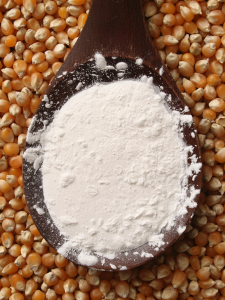Nov 9 2010
New York University researchers have developed a method to shape solid materials using a corn starch solution. The process, devised by researchers in NYU's Courant Institute of Mathematical Sciences and Department of Physics, offers a potential technique for material cutting and manufacturing processes.
Their work is described in the journal Physical Review Letters.
Manufacturers use a variety of methods for shaping solid materials, ranging from laser cutting to high-speed jets of water. While altering the shape of such materials, such as glass, metal, or stone, is relatively straightforward, doing so with precision often proves challenging.
 NYU researchers submerged a motor-powered, plastic sphere through the cornstarch solution toward a containing wall made of clay, stopping just short of the wall.
NYU researchers submerged a motor-powered, plastic sphere through the cornstarch solution toward a containing wall made of clay, stopping just short of the wall.
With this in mind, the NYU researchers sought to create an alternative, but rudimentary, method to shape solid materials in a precise fashion. To do so, they considered a process involving a corn starch solution.
Similar solutions have proved valuable in creating body armor—but for different reasons. The molecules in these fluids—also called shear-thickening fluids—are closely packed, but loosely arranged. Under most conditions, they flow like most liquids. However, when met with pressure from an object or other force, its particles interlock and the fluid acts like a solid. Body armor comprised of shear-thickening fluids, when met with bullets, become hard and deflect incoming projectiles.
The NYU researchers sought to apply these principles in a different manner. Instead of using the solution to deflect objects, they aimed to use it as part of a process to shape solid materials—in this case, a wall of modeling clay.
To do this, they submerged a motor-powered, plastic sphere through the cornstarch solution toward a containing wall made of modeling clay, stopping just short of the wall. Using the force of the sphere to harden the cornstarch solution, the researchers were able to make indentations in the wall of modeling clay. In addition, they were able to do so with a degree of precision by taking into account speed, force, and geometry. By moving the sphere at fast speeds through the solution, they created large depressions in the clay; by slowing it down, they created smaller depressions.